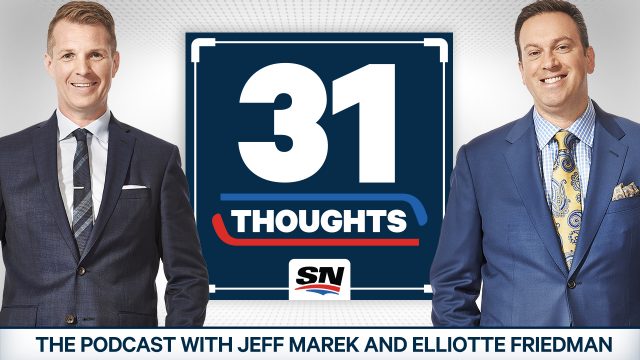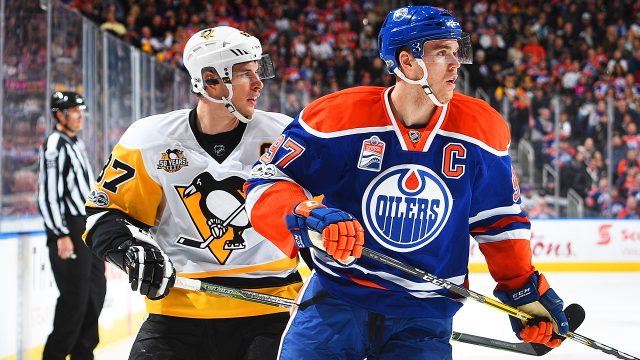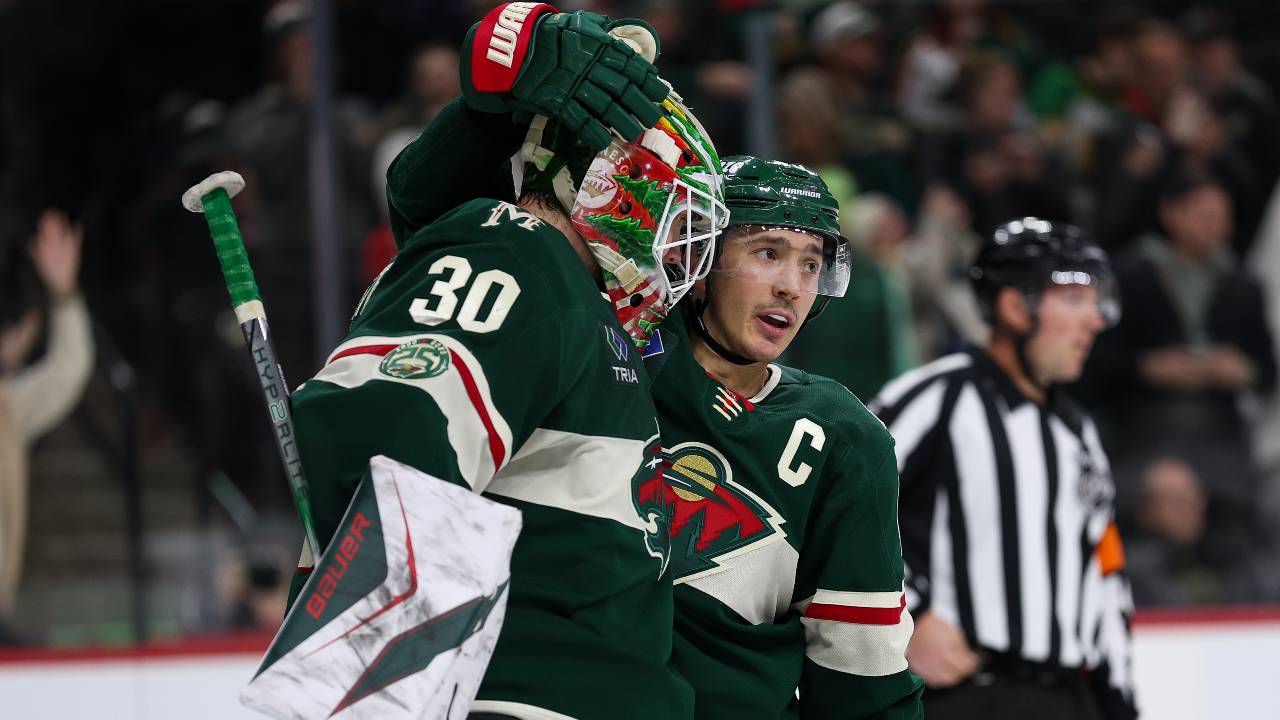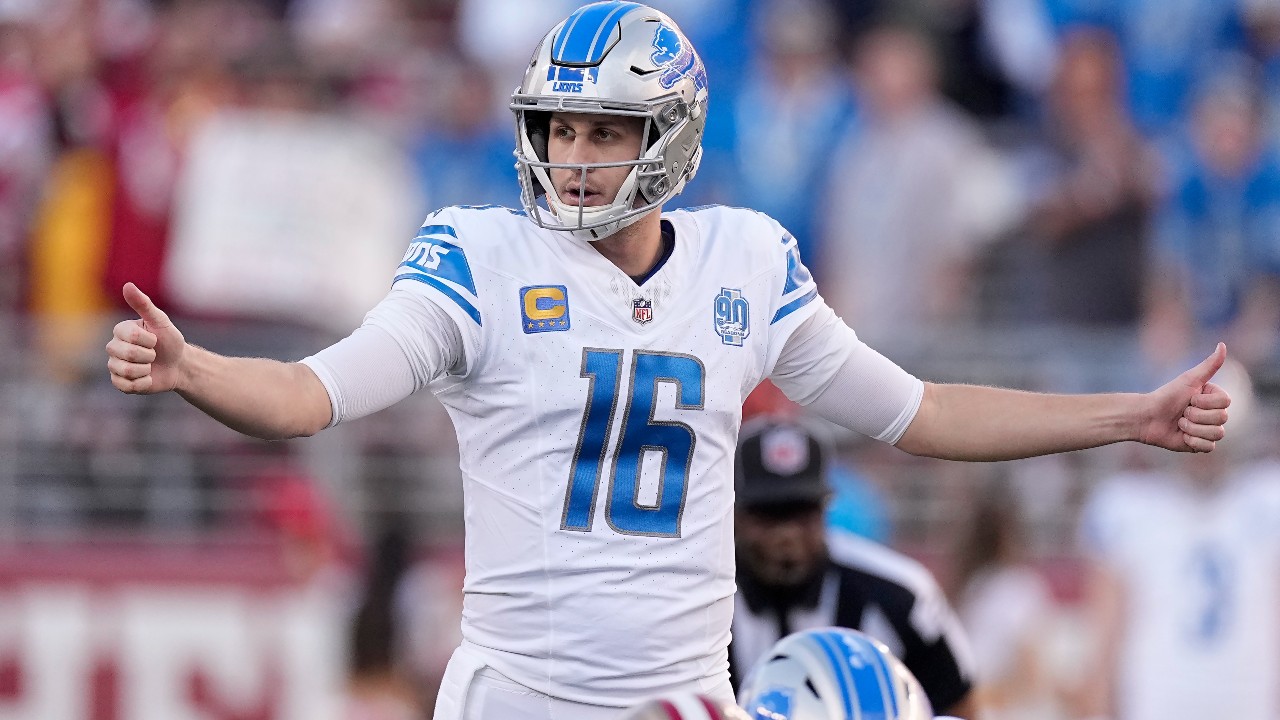
So, this is what a flat NHL salary cap looks like.
Taylor Hall taking a one-year flyer with the Buffalo Sabres, and scads of familiar names signing for less than seven figures.
Talented scorers in their prime (Mike Hoffman, Anthony Duclair) kicking around the open market more than two weeks after free agency opens.
Heartbreaking splits between Henrik Lundqvist and the New York Rangers, Braden Holtby and the Washington Capitals, and Alex Pietrangelo and the St. Louis Blues.
A major reason for the pinch is that literally a third of the league is mired in salary cap hell, with little to no room to make a significant addition without leaning into long-term injured reserve, burying an NHLer in the minors or trading off the roster.
Some of these clubs — the Tampa Bay Lightning and New York Islanders, in particular — need to prioritize locking up their own restricted players instead of looking elsewhere. (And certainly some franchises not on this list have internal caps set by ownership they must solve.)
Not only has a crowded cap hellscape left more UFAs on the board than normal and forced a surge in minimum-wage contracts, but in-season manoeuvres could also suffer with a lack of breathing room.
Without further ado, here’s a look at 10 teams living in cap hell, and how and when they might climb out.
Cap space: $0
Roster size: 22/23
It’s one thing to be pressed against the cap ceiling if you’re a contender. It’s another if you’re the Anaheim Ducks. Yet GM Bob Murray has positioned his club as one that is retooling — not rebuilding — three years removed from its last playoff victory.
“If we get improvement in some of the young guys, which it’s time for, and you get a little bit more consistency from the middle-age guys, I think we can be right there fighting for a playoff spot. There’s no reason we can’t be,” Murray said this off-season.
Hence, the Kevin Shattenkirk and Derek Grant signings and rumours that Murray expressed interest in bringing back UFA Sami Vatanen.
The salary-dump deal of Erik Gudbranson to the Ottawa Senators and Ryan Kesler’s LTIR placement have provided some cap relief, but Corey Perry’s $6.625-million buyout hit through 2022-23 is no joke.
With veterans like Ryan Getzlaf ($8.25 million), Adam Henrique ($5.825 million) and David Backes ($4.5 million) all getting paid for what they’ve done instead of what they will do, it’ll be tough to consider the Ducks a contender until some of this money comes off the books.
Scary thought: Murray is in the red without a backup goalie to John Gibson on the books.
 Arizona Coyotes
Arizona Coyotes
Cap space: $0
Roster size: 22/23
Bill Armstrong tops the list of GMs we do not envy.
What a situation to walk into: No high draft picks. An expensive captain with an ironclad no-move clause. And no wiggle room under the cap.
Under previous GM John Chayka, the Coyotes swung hard and missed (see: Hall, Taylor). So, Armstrong’s hand was forced to attempt trades, buy out Michael Grabner, let a decent depth forward like Vinnie Hinostroza walk for nothing, and try (unsuccessfully, so far) to trade Oliver Ekman-Larsson to one of two teams.
A measure of relief will arrive at the end of 2021, when hefty contracts for vets Alex Gologoski, Niklas Hjalmarsson, Jason Demers and Derek Stepan all come off the books. (Desert legend Marian Hossa will finally be paid off in full, too.) Armstrong should be able to flip a couple of these guys for picks at the 2021 deadline to contenders in search of depth.
Perhaps the biggest long-term cap salve in Arizona would be youngsters Clayton Keller ($7.15-million cap hit through 2028) and Jakub Chychrun ($4.6 million through 2025) exceeding their paycheques.
Cap space: $732,509
Roster size: 22/23
Among all the league’s 50-plus unsigned RFAs, only one (the Islanders’ Ryan Pulock) averaged more time on ice than the Edmonton Oilers’ Ethan Bear. The defenceman built a heckuva case for a raise, and it won’t currently fit under the team’s cap without a little shuffling.
The buyouts of Benoit Pouliot and Andrej Sekera and the salary-retention of Milan Lucic have tightened Ken Holland’s purse strings by more than $4.5 million. And even with a nice bounce-back campaign in 2019-20, James Neal is no longer a $5.75-million asset.
Past mistakes continue to haunt.
So, Holland had to let some depth walk (Matt Benning, Andreas Athanasiou), and he could only spend so much on his goaltending (welcome back 38-year-old Mike Smith at $1.5 million). The GM did a fine job filling gaps with short-term commitments (Kyle Turris, Tyson Barrie, Tyler Ennis, Jesse Puljujarvi), but the Oilers will have to move money out if they want to make a significant addition in-season. This is why Adam Larsson trade rumours pop up from time to time.
Edmonton will have nine(!) UFAs in 2021, when Pouliot finally comes off the ledger, so expect Holland to aggressively start molding the roster he wants next off-season.
 New York Islanders
New York Islanders
Cap space: $8.9 million
Roster size: 20/23
You don’t barge your way to the Eastern Conference final, then turn around and give up on a young, top-four defenceman like Devon Toews (for a couple of second-rounders) if you’re not feeling a few cap-hell flames.
Lou Lamoriello, that master negotiator and keeper of secrets, will try grinding down the league’s most valuable unsigned RFA, Mathew Barzal, and keep another key RFA, Pulock, in the fold for a reasonable rate. Pulock’s arbitration is set for Nov. 6.
The danger here is walking Barzal, one of the roster’s few offensive engines, to UFA too early.
The Isles also had their eyes on bringing back UFAs Andy Greene and Matt Martin on bargain contracts, but getting all this work accomplished with expensive vets (Andrew Ladd, Leo Komarov, Johnny Boychuk, Cal Clutterbuck) sagging the ledger won’t be easy.
We have to wonder if Lamoriello doesn’t explore, say, a Komarov buyout in the next window to make it all fit.
Cap space: $0
Roster size: 21/23
So… Vince Dunn offer sheet, anyone?
Even with trading one of the best No. 2 goalies in the biz (Jake Allen), GM Doug Armstrong could not meet former captain Alex Pietrangelo’s raise request or salary bonus wishes.
Instead, he snatched up power-play quarterback Torey Krug for $2.3 million less cap hit than Pietrangelo and added bargain forward Kyle Clifford.
What Armstrong hasn’t done yet is address the absence of top sniper Vladimir Tarasenko, also on IR, or inked Dunn — a coveted young defenceman entering his prime on a stacked blue line — to an extension.
The Blues are already at the cap, and a trade piece like, say, Tyler Bozak won’t yield a great return in this climate.
The bet here is that Tarasenko’s $7.5 million and Alexander Steen’s $5.75 million will need to slide into LTIR for relief. Even then, there will be little room to wiggle or add more scoring punch.
It’s hard to believe the 2019 champs haven’t taken a small step backwards because of this financial bind.
 Tampa Bay Lightning
Tampa Bay Lightning
Cap space: $2.9 million
Roster size: 18/23
The difference between the Blues and Lightning and the rest of these franchises in a bind is about 14 karats. No doubt, it’s easier to rationalize life in cap hell when you’re wearing a Cup ring.
Tampa is the early Las Vegas favourite to go all the way again in 2021, but GM Julien BriseBois has some serious lifting to do yet. All three RFAs — Mikhail Sergachev, Anthony Cirelli and Erik Cernak — are players worth investing in. All three need raises.
Even with letting nice role players like Shattenkirk and Zach Bogosian walk, more money needs to be shipped out. That Tyler Johnson ($5 million AAV) cleared waivers unclaimed — and that loyal captain Steven Stamkos’s name was dared to be raised in trade rumours — illustrates just how difficult it’ll be to get money off the books here.
BriseBois will either need to attach draft picks to tough contracts (Johnson, Alex Killorn) or ship out a player he’d rather keep (Ondrej Palat? Yanni Gourde?). This is one heckuva pickle, but banners hang forever.
Cap space: $0
Roster size: 23/23
How tight is Toronto’s head to the ceiling?
Tight enough that the Leafs’ brass had to ask Ilya Mikheyev to trim a few thousand off his agreed deal at the last minute in order to help the roster be compliant for opening night.
Kyle Dubas has worked magic on the fringes of his roster. Friday’s re-up of Travis Dermott for $874,125 is a steal. Only depth forward Joey Anderson remains on Toronto’s unsigned RFA list.
Cap czar and assistant GM Brandon Pridham will find a way to make the pieces fit, but the Leafs’ tenuous cap situation won’t make sustaining injuries or adding bodies in-season easy.
“Whether we have to go with 20 men on the roster to start, or on off-days sending guys down to play games for the Marlies… to accrue some savings that way will be key,” Dubas explains.
“In working with Brandon on it daily, it does not appear that we will need to move anybody else out.”
Cap space: $0 million
Roster size: 23/23
In signing RFA Jake Virtanen to a bridge deal this week, Vancouver has reached its roster and spending maximum.
When the dust settled, a flat cap cost the Canucks a scoring winger (Tyler Toffoli), two solid right defencemen (Chris Tanev, Troy Stecher) and their regular-season MVP (Jacob Markstrom).
GM Jim Benning did well patching holes with Nate Schmidt and Holtby. Yet being forced to plan for the expensive futures of Elias Pettersson and Quinn Hughes has temporarily set the club a half-step backwards.
To be honest, we’re a bit surprised the club didn’t use a buyout option on Sven Baertschi ($3.37 million cap hit) to purchase some breathing room.
Expensive fourth-liners, the Ryan Spooner buyout and Roberto Luongo’s $3-million cap recapture penalty are all restricting Benning’s options in B.C.
Cap space: $0
Roster size: 21/23
The Golden Knights dealt away core players Paul Stastny and Nate Schmidt for futures are still over the cap.
Such is the price of high-stakes UFA pitches like the one Kelly McCrimmon made to land Pietrangelo, the biggest fish in the pond.
Important players like Jonathan Marchessault, Alec Martinez and Max Pacioretty have all heard their names chucked around the rumour mill, but the most obvious area of financial strain is in the crease.
Marc-Andre Fleury and Robin Lehner combine for $12 million. McCrimmon tried hard to deal Fleury, willing to attach picks and retain salary… and yet, the Flower is still planted in the desert.
Even with no RFAs to sign, the Knights are already up against it with only a 21-man roster.
They’ll keep trying to shed salary before opening night.
Cap space: $27,144
Roster size: 21/23
Two of the more intriguing names in the Winnipeg Jets’ system — Jack Roslovic and Sami Niku — are still in need of new contracts, and GM Kevin Cheveldayoff has about enough cap space to buy a used Corolla.
Relief should arrive by shifting injured centre Bryan Little to LTIR — and with 12 guys becoming free agents in the 2021 off-season, more wiggle room awaits — but the trade rumours hovering over Patrik Laine and Roslovic aren’t vanishing anytime soon.
Barring the Laine blockbuster, the Jets could be handcuffed through the winter while still in go-for-it mode.
All salary cap info via the impeccable CapFriendly.com.













